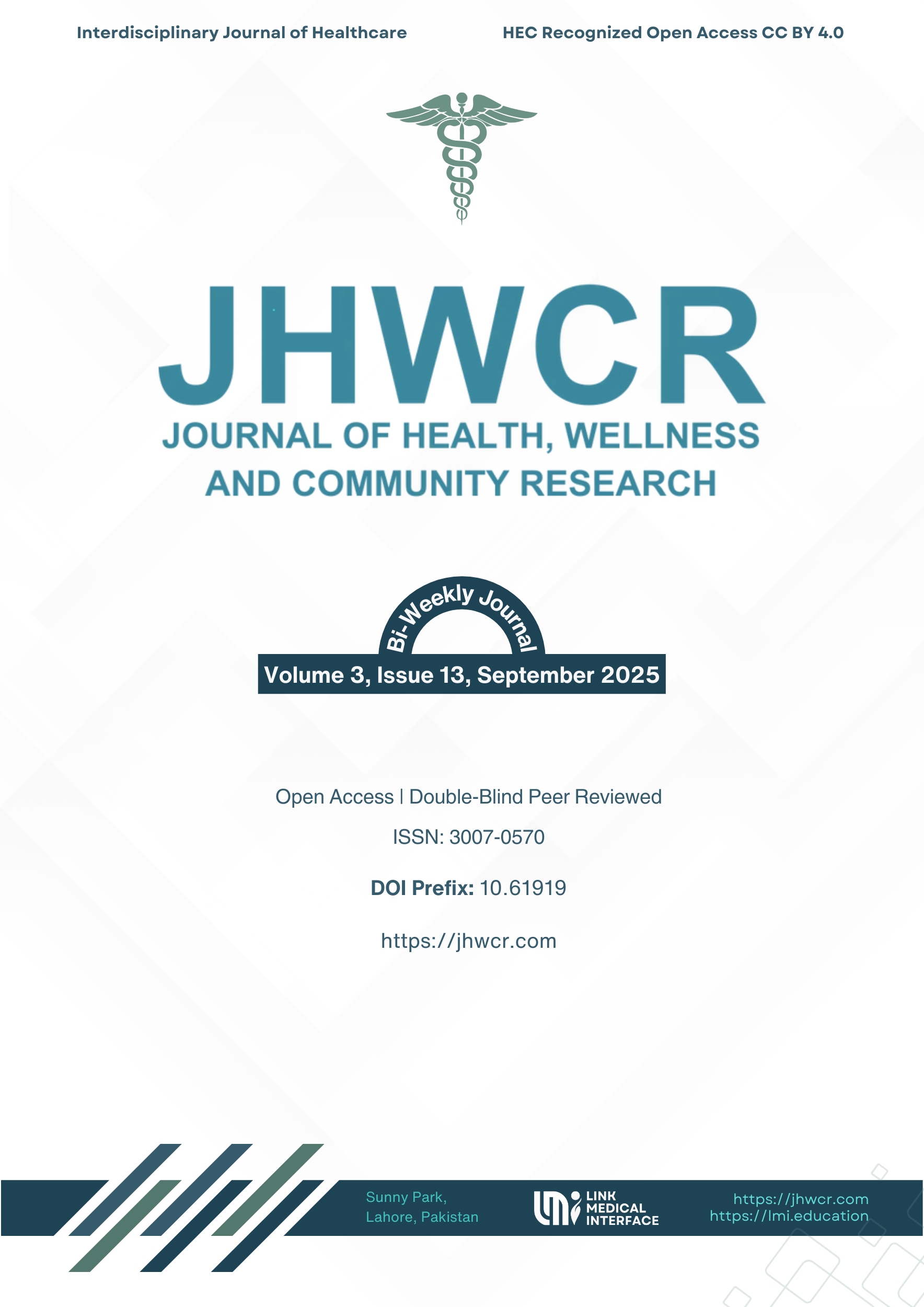Association of Knee Osteoarthritic Pain and Its Impact on Quality of Life Among Diabetic and Non-Diabetic Population in Faisalabad
DOI:
https://doi.org/10.61919/wphjdn53Keywords:
Knee Osteoarthritis, Diabetes Mellitus, Pain, Quality of Life, SF-36Abstract
Background: Knee osteoarthritis (KOA) is a prevalent degenerative joint disorder that compromises mobility and quality of life, particularly in middle-aged and older adults. Diabetes mellitus (DM) has been increasingly implicated in the development and progression of KOA due to shared metabolic pathways, systemic inflammation, and obesity-related risk factors. However, limited evidence exists from South Asian populations, where the dual burden of DM and KOA is rising but remains underexplored. Objective: This study aimed to investigate the association of diabetes mellitus with knee osteoarthritis in adults, focusing on pain severity, functional impairment, and health-related quality of life. Methods: A cross-sectional study was conducted over four months among 133 participants aged 40–60 years recruited from two tertiary hospitals in Faisalabad, Pakistan. Data were collected using a structured questionnaire, Numeric Pain Rating Scale (NPRS), and SF-36 quality-of-life tool. Purposive sampling was employed, and associations between diabetes, KOA, and clinical outcomes were analyzed using chi-square tests with a significance level of p<0.05. Results: Among participants, 57.1% had diabetes and all were diagnosed with KOA. Diabetic individuals reported significantly higher pain interference, frequent swelling, greater stiffness, and lower SF-36 scores across vitality, physical functioning, bodily pain, and social domains compared to non-diabetics (p<0.001). Lifestyle modification was adopted by 57.9% but remained suboptimal. Conclusion: Diabetes mellitus significantly exacerbates the severity and functional impact of knee osteoarthritis, leading to greater pain, disability, and reduced quality of life. Integrating glycemic control with musculoskeletal care, rehabilitation, and patient education is critical. Further longitudinal and multicenter studies are warranted to establish causal mechanisms and evaluate targeted interventions.
Downloads
Published
Issue
Section
License
Copyright (c) 2025 Aneeza Amjad, Rimsha Shahbaz, Ayesha Riaz, Sana Ghafoor (Author)

This work is licensed under a Creative Commons Attribution 4.0 International License.


